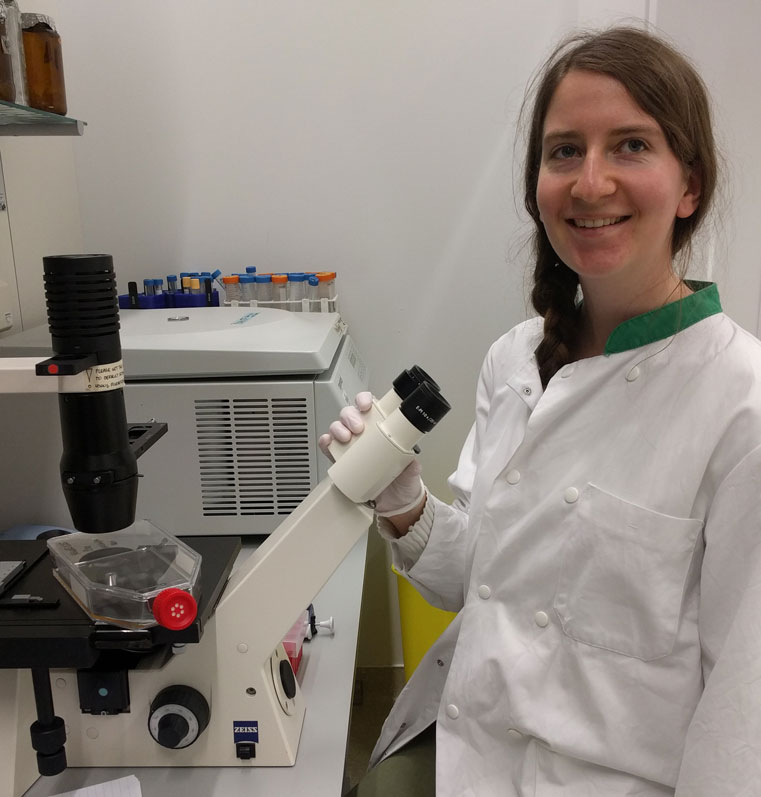
Miriam Geissler, Germany
Master student - Albert-Ludwigs-University Freiburg, Germany
During the last months, I had the opportunity to join the research group of Prof. Annemieke Aartsma-Rus from the Leiden University Medical Centre (LUMC) where I could complete my master’s thesis under the supervision of Prof. Janbernd Kirschner from the University of Freiburg.
My research project was in the context of Duchenne Muscular Dystrophy (DMD). In previous studies it was shown that the DMD-mRNA levels are reduced towards the 3’end in the mdx mouse, a mouse model for DMD, compared to wild type mice. A similar reduction was also observed in patients affected by Becker Muscular Dystrophy (BMD) compared to healthy controls. Several therapy approaches, such as exon skipping or stop codon read through have DMD-mRNA or –pre mRNA as a target. Therefore, mRNA stability and a sufficient transcript level are very important to ensure an efficient exon skipping.
A possible explanation for the imbalance of the DMD transcripts could be post-transcriptional modification caused by RNA-binding proteins (RBPs).
For my research project, I optimized a method to isolate and analyze RBPs which are present in muscle cells . The protocol included different steps that needed to be set up and optimized. In the first step, the proteins which were directly bound to RNA were covalently linked to their binding partners by irradiating cultured muscle cells with UV-light. In the second step cross-linked RNA-protein complexes were captured with magnetic beads with the polyA tail of mRNA as target. Proteins that were bound to the captured RNA were purified and analyzed by mass spectrometry.
During the last months I successfully set up the method and obtained first results from the protein analysis by mass spectrometry. The method still needs further improvement to allow capturing of RPBs which are specifically bound to the DMD transcript.
During my stay, I was very good accompanied and supported by my supervisors and the whole lab. I fully enjoyed the research atmosphere, the lively exchange between scientists and the insights I could get at the LUMC and the department of Human Genetics. I think that the optimization of the method to isolate RBPs was the first step towards brand-new discoveries and hopefully it will lead to more efficient therapeutic approaches for the therapy with AONs.
September 2016
